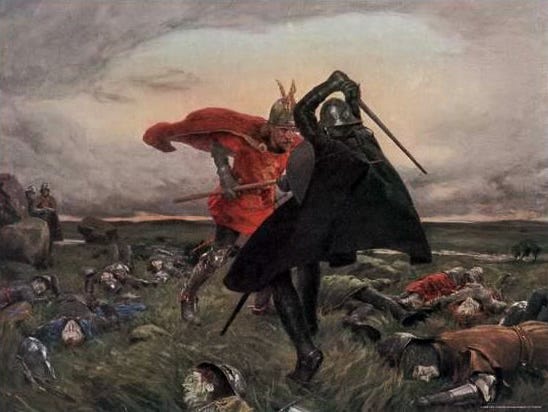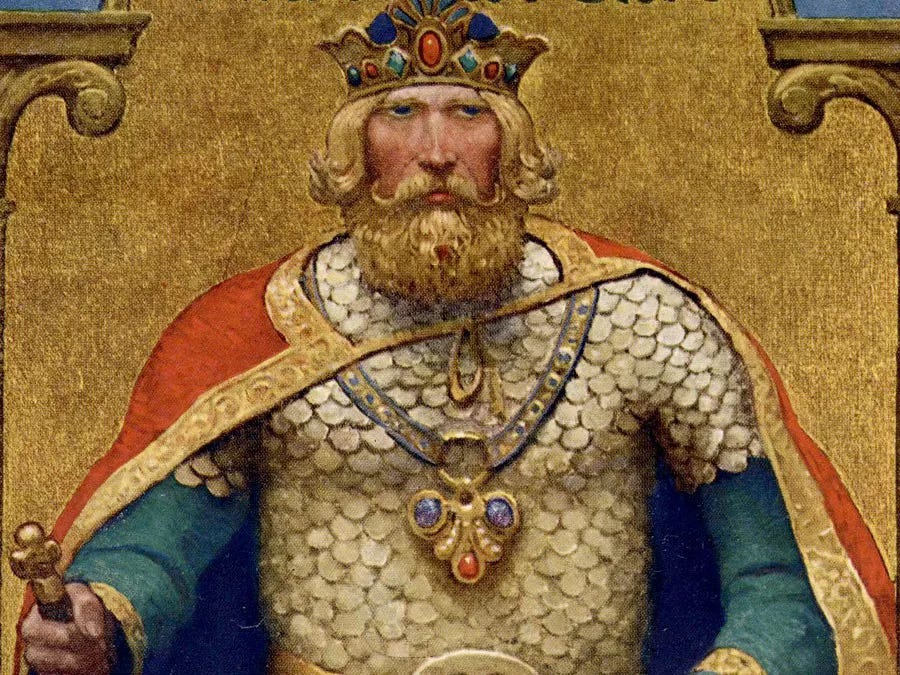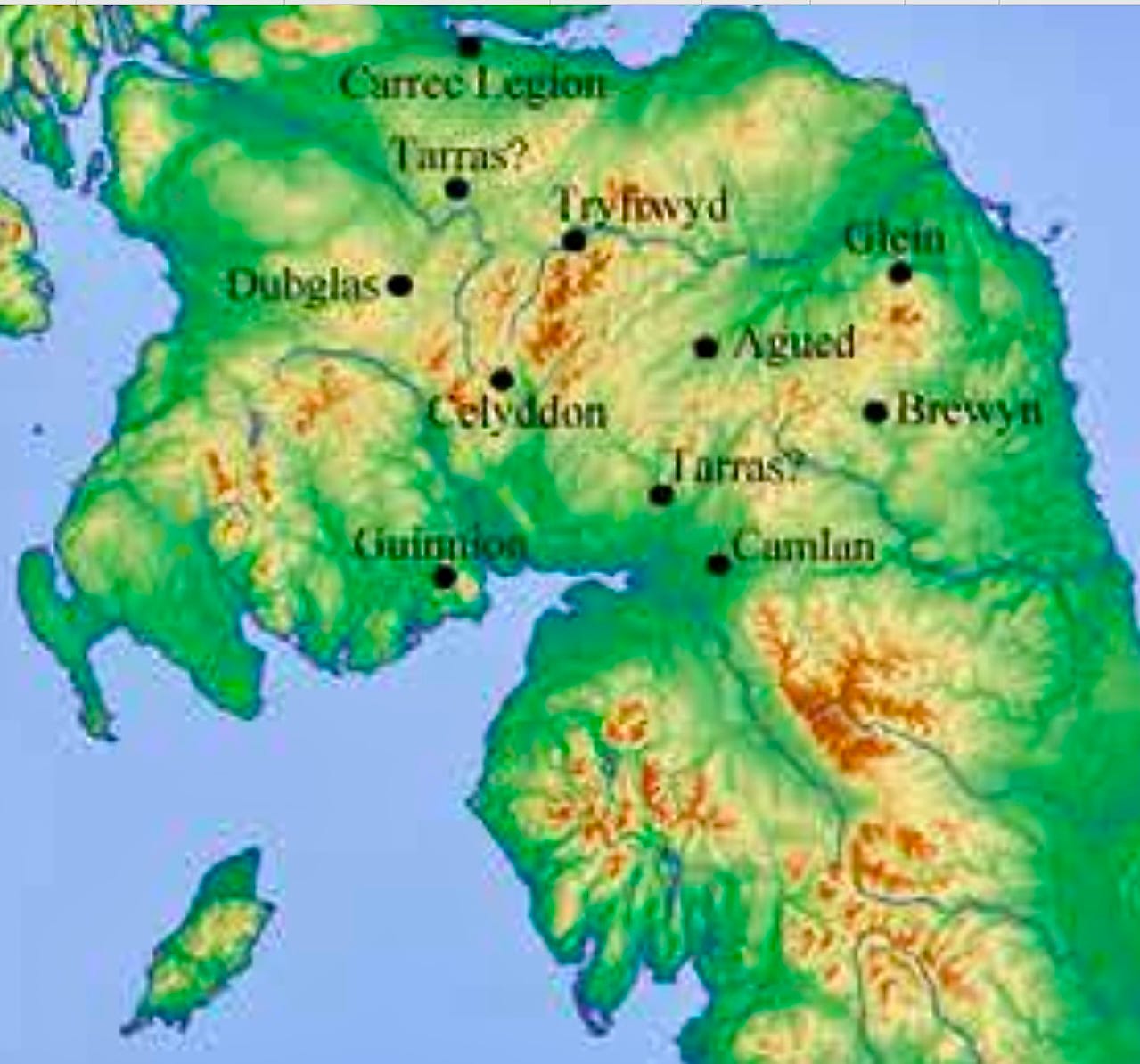“King” Arthur was probably a real person who fought in Cumbria
Top academic's new analysis suggests legendary hero was northerner who fought 12 battles over food for his starving people during famine caused by 536 AD volcano
Something stunning has happened in British History. The quest to establish whether King Arthur was a real person has suddenly leapt back to life.
Fifty years ago, the academic profession came to a consensus view that the legendary Dark Ages hero had never lived. Scholars began excluding him from serious history books, leaving the study of Arthurian legend to what they termed cranks, amateurs and pseudo-intellectuals.
But a new generation of academics more skilled in the interpretation of ancient texts has succeeded in decoding previously unreadable clues.
They suggest Arthur was an actual historical person who lived in the sixth century after all - and that he was a northerner. The analysis says he fought 12 battles against other North Britons, many in Rheged, the predecessor of Cumbria, to provide cattle for his starving people. This followed a volcanic winter caused by the eruption of Krakatoa in 536 AD. It suggests he met his end at the battle of “Camlann”, a location now identified as Castlesteads fort on the Cumbrian section of Hadrian’s Wall.
The new analysis is based on a Latin work entitled the Historia Brittonum compiled from earlier now-lost documents by a monk called Nennius in 829 AD. The text survives in the form of copies written by clerics on vellum in the 11th Century.
This work is crucial because it contains the earliest-known definite reference to Arthur.
The Historia contains a list of a dozen battles supposed to have been fought by Arthur. Academics say it must be taken seriously because it is the only detailed record that survives of any events that took place in the Dark Ages from a British point of view. If true, the new analysis of the locations of these battles overturns the traditional story that Arthur was a royal southerner with a magical sword who fought the Anglo-Saxons. In reality, the new analysis says, he was a gritty military leader who earned a great reputation while campaigning much of his time in Rheged and the north-east of Britain.
This reading of the document is controversial because Nennius was not a historian in any conventional sense. He rummaged through old chronicles and fragments of folklore “heaping together all I could find” in order to create a heroic narrative. His ninth-century audience was facing the threat of heathen Saxon invaders so Nennius cast the semi-mythical Arthur as the hero of a fight to expel the Anglo-Saxons.
By the time Nennius was compiling his work, Arthur had become a folk hero and this encouraged the monk to credit him with miraculous deeds such as slaying hundreds of enemy warriors single-handedly.

Despite Nennius’ embellishments, most experts agree quite a lot of authentic writing survived intact in the Historia from the fifth and sixth centuries. The problem is to work out which bits have been adulterated by Nennius and how much came through untouched.
The section listing the twelve battles is thought to have been lifted from a Welsh poem that was already centuries old when Nennius came across it. This type of Medieval poetry tended to ascribe battles to heroes which they never fought in order to enhance their glory. For this reason, at least one prominent scholar has denounced the list as a fabrication, but most agree that the list of battles refers to real places and that, if their locations could be identified, “Arthur” and his world might be restored to the ranks of genuine, recorded history.
The 12 battles:
At the mouth of the River Glein.
(2-5) The River Douglas in Linnius.
On the River Bassus.
At Cat Coit Celidon.
At Guinnion.
At the City of Legion.
At the River Tribuit.tact
At Mount Agned.
Badon (or Camlann).
Previous attempts to identify places where these battles happened have relied on guesswork about the meaning of obscure names. These speculations suggested Arthur’s military campaign was implausibly extensive, stretching from Dorset to Edinburgh.
The new reading benefits from advanced philological techniques. It is the rigorous effort to attempt to recover the sense of the passage in question through the detailed examination of the language in context.
A key figure behind the latest interpretation is philology Professor Andrew Breeze of the University of Navarre in Pamplona in Spain.
Breeze decided that Arthur’s battles were not scattered across Britain, as previous accounts had maintained. In fact, he says, all but one took place in a tight geographical area of Northumbria and Rheged.
Breeze believes one of the twelve battles in the list now seems to be the odd one out. It was fought at Mount Badon, supposedly in the hills around Bath in Somerset. Nennius doubtfully claims 960 men died in this clash after “one charge from Arthur...no one killed them but he alone”. With the eleven other battles seemingly in the north, Breeze thinks Badon could not have been one of Arthur’s. He points out that the earliest versions of the story said Badon was fought by the Roman, Aurelius Ambrosius.
Breeze’s thesis is not supported unanimously by his academic rivals. Professor Thomas Owen Clancy, Ollamh na Ceiltis (Professor of Celtic) at Glasgow University questioned the location he has chosen for the River Bassas which Breeze places near Paisley. Clancy believes Bassas is a scribe’s miswriting of Tarras. That would place the battle at Tarras Water in Eskdale, Dumfries and Galloway, sixty or more miles to the south. Clancy doubts that the list of battles was written up near to the time they were fought and that Breeze is too optimistic that it amounts to proof that Arthur was a northerner.
Breeze’s new analysis makes it clear Arthur fought other Britons, not Anglo-Saxons. He did so in a desperate struggle to obtain food, probably cattle, for his starving people. Breeze believes the battles came at the time of a famine in 536 AD when the Krakatoa volcano erupted in Indonesia, blotting out the sunshine and ruining harvests.
The Historia indicates that, a year after his humanitarian triumph, Arthur was killed at Camlann. Traditional tales suggested Camlann was Camelford in Cornwall, four miles south-east of Tintagel.
But at the time of the Roman occupation Castlesteads, a fort on Hadrian’s Wall, bore the name Camboglanna, which philologists now think was “Camlann.”
So, this new Arthur is not the almost supernatural figure of Medieval Romances, Hollywood movies and children’s bedtime stories. Instead, he was a mud spattered Celtic tribal leader who fought to save his people from hunger amid the economic collapse that followed the Roman Empire’s withdrawal from Britain.
A sceptic might dismiss this new Arthur’s military exploits as mere cattle raids. But that is to misunderstand the central importance of cattle in the hand-to-mouth subsistence farm economy of early medieval society. Cattle were the most important symbol of wealth. They stood between life and death in the early Medieval world. It is highly plausible a string of victories against Scottish and Pictish raiders would have earned Arthur high renown.
This is an extract from a forthcoming book. You can read more like it in my latest, The Trophy at the End of the World. You can buy it instantly here:
https://www.fletcherchristianbooks.com/product/the-trophy-at-the-end-of-the-world
Or you can pick up a copy from the New Bookshop, Main Street, Cockermouth, Bookends in Keswick or Carlisle and Sam Read in Grasmere.
Keep reading with a 7-day free trial
Subscribe to Hidden Cumbrian Histories to keep reading this post and get 7 days of free access to the full post archives.





